
New pump metallurgy suitable for harsh well conditions, reduces workover intervention costs and minimizes hidden deferment. Pilot success results in average cost savings of USD 130,000 per well
Introduction
In challenging well conditions of high water cut, medium to heavy oil gravity, medium to high oil viscosity, solids production, and corrosive fluid, the reciprocating rod pump (RRP) can have a high failure rate. The initial wear caused by solids/abrasives production scratches and scores the subsurface pump barrel, and then corrosion occurs at these points of weakness at a later stage, eventually damaging the pump, causing a worn-out and cracked barrel, grooves, and deep scoring. A new barrel material with high abrasion resistance is needed to help mitigate these failures, prolong the RRP run life, and sustain RRP efficiency.
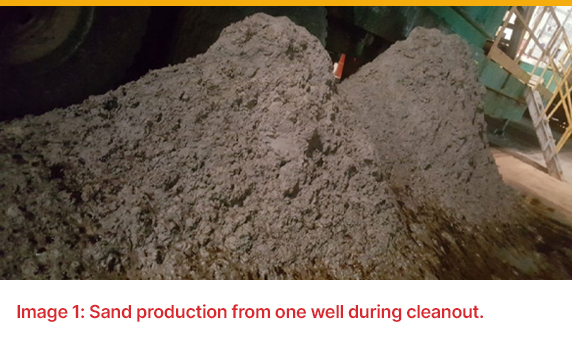
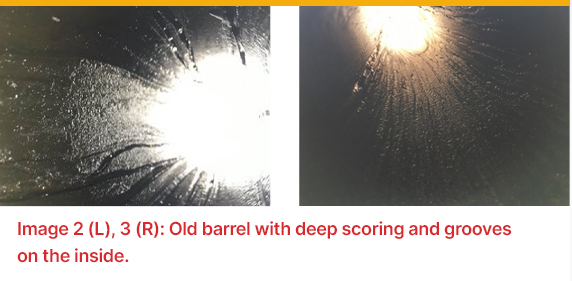
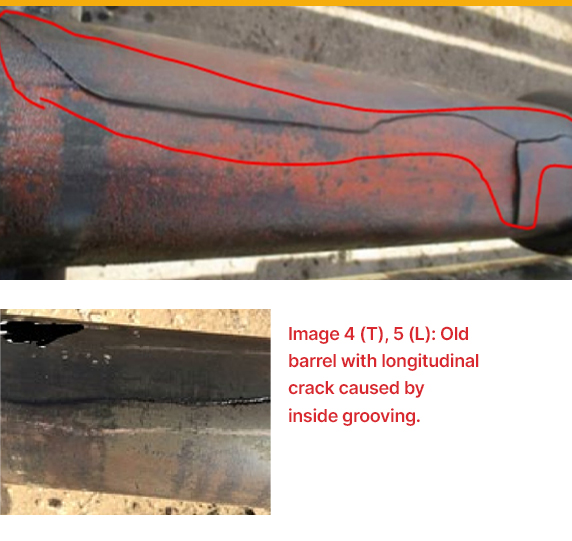
Customer Challenge:
In South Oman, an RRP was being used to produce up to 400-m3/d (2,500 B/D) oil wells in harsh well conditions and was experiencing a 75% pump failure rate with significant underperforming of the pump efficiency, called hidden deferment. Analysis showed that the overwhelming reason for the failure was the produced sands/solids, which were scratching and scoring the pump barrels and causing corrosion on the barrel base metal, leading to a combined erosion/corrosion failure mode.
LUFKIN Solution
LUFKIN developed a new abrasion-resistant coating applied over the base metal—a double-plated chrome that can be applied to either brass or steel. This new metallurgy, which meets the API standard has a higher hardness than the produced sands and is the first line of defense by resisting that initial mechanical wear, thereby prolonging the life of the pump. This, in turn, pushes corrosion damage further down the road.
A pilot trial was proposed to test this new pump on 25 wells in 2018.
Pilot results
As depicted in Figures 1 and 2, the charts for Wells 1 and 2 each show three older pumps that start off with stable production, but then rapidly drop off in efficiency before failure, in a period of hidden deferment. The customer lost a great deal of oil production before they needed to replace the pump. By comparison, the improved trial pump shows stable production throughout its run life before failure, with no hidden deferment period—no production was lost.
For tabulated results, see Table 1. In a single well, the older pump’s run life was 244 days vs. 654 days for the new trial pump. This avoided about three well interventions to replace the pump. And with 80 days of hidden deferment (underperformance) with the older pump, the customer lost 30 BOPD multiplied by 80 days. Lost production plus rig downtime plus the repeated cost of replacement equipment equals a great deal of unnecessary expense. Our customer was so encouraged by the performance of the improved LUFKIN trial pump that they decided to expand its use on a larger scale.
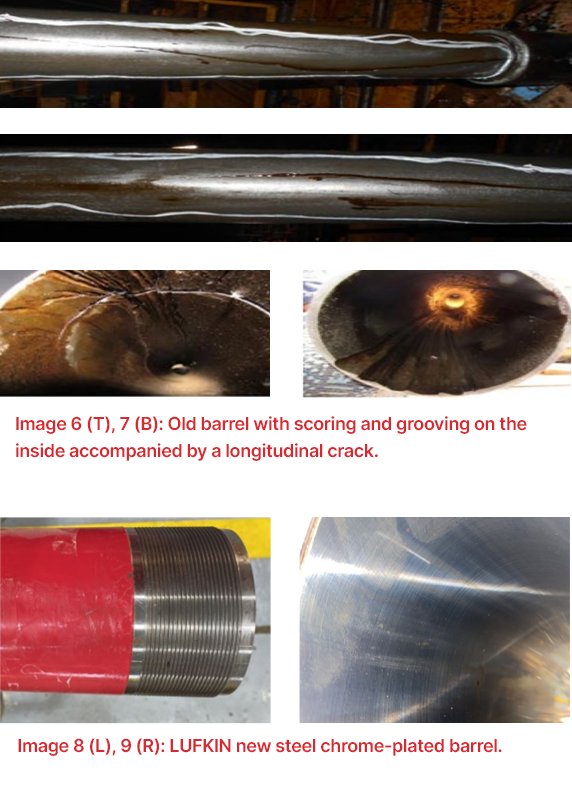
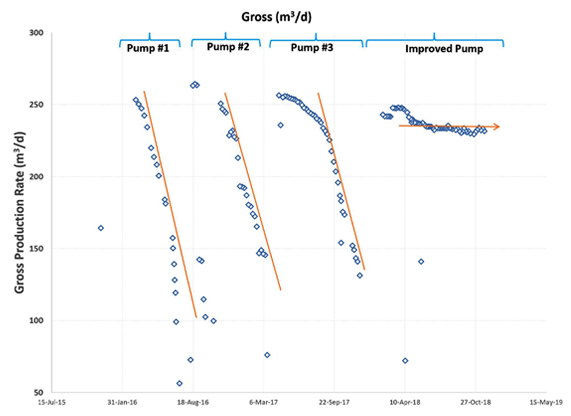 Figure 1. Well 1 performance.
Figure 1. Well 1 performance.
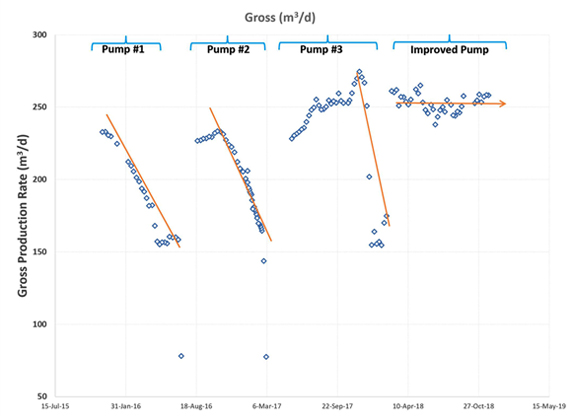 Figure 2. Well 2 performance.
Figure 2. Well 2 performance.
| Well | Previous Pump Run Life (days) |
Run Life (days) |
Previous Pump Performance | Net Oil (BOPD) |
Cumulative Hidden Deferment (bbl) |
Avoided Intervention Frequency | Avoided Intervention Cost Savings USD (50,000 per one) |
| 1 | 244 | 654 | Hidden deferment after 4 months (80 days) until 50% efficiency | 30 | 1,440 | 2.68 | 134,016 |
| 2 | 189 | 693 | Hidden deferment after 3 months (90 days) until 50% efficiency | 25 | 900 | 3.67 | 183,333 |
Table 1. Cost savings examples.
Full Deployment
Based on the successful pilot test, the South Oman operator moved forward into a field-scale deployment phase, installing the new LUFKIN steel chrome-coated barrel on 450 wells from 2020 to 2022. These pumps were installed in the same harsh conditions and in the same general area as the pilot test was conducted. After 15 months, the statistics showed a decrease in the failure index from 37 to 23.7% related to the downhole pump, which reduced workover jobs, minimized hidden deferment, and increased equipment efficiency, reliability, and ultimately increased run life.